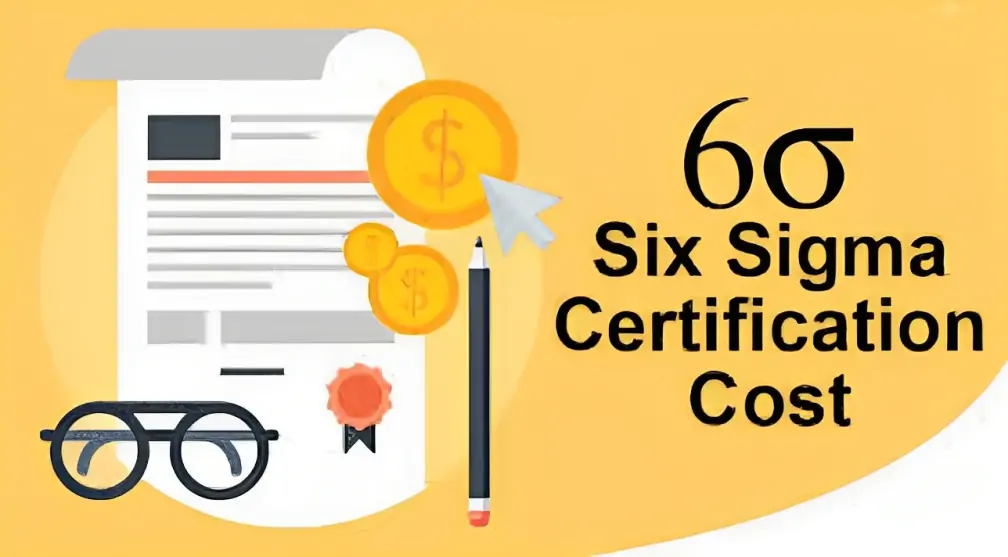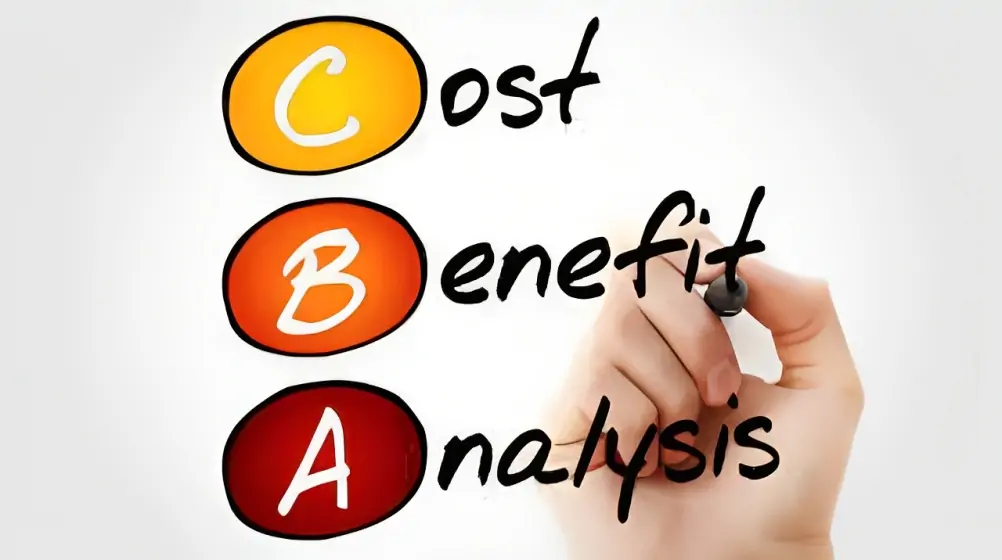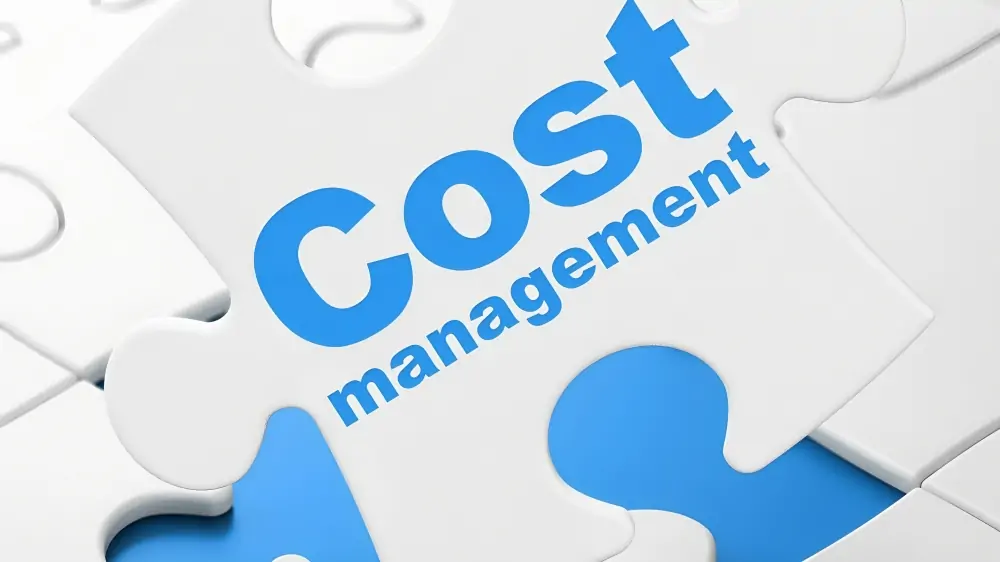Elevate your career with a guide on Six Sigma Green Belt Certification cost. Discover the investment in excellence, navigate costs strategically, and embark on a journey to success.

Introduction:
Embark on a transformative journey to excellence with the affordable Six Sigma Green Belt certification. Master Six Sigma methodologies and explore the cost dynamics of this certification offered by the International Association for Six Sigma Certification (IASSC). Beyond the price tag, discover how the Six Sigma Green Belt certification can strategically advance your career, blending precision, efficiency, and excellence for success in process optimization and quality enhancement.
Six Sigma Green Belt Certification Cost:
The cost of obtaining a Six Sigma Green Belt certification encompasses various components, including examination fees, training materials, and potential retake expenses. The International Association for Six Sigma Certification (IASSC) ensures that candidates receive top-notch training and assessment, contributing to the global recognition of this certification.
To attain your Six Sigma Green Belt certification, candidates need to plan for exam fees. IASSC provides flexibility with different packages, each varying in cost. Choosing a package aligned with your learning preferences and budget is crucial to maximizing the return on your investment.
Factors Influencing Cost:
Several factors contribute to the variation in Six Sigma Green Belt Certification Cost. Accredited training providers, geographical location, and the level of support provided can impact the overall investment. Prospective candidates should thoroughly research and consider these factors when planning their certification journey.
Choosing the Right Package:
Comparing Six Sigma Green Belt Certification Prices is an essential step for candidates. Different training providers may offer distinct levels of support, additional resources, and post-training assistance. By carefully evaluating these offerings against the cost, candidates can make an informed decision that aligns with their career objectives.
Strategies for Cost Management:
While investing in professional development is crucial, managing costs effectively is equally important. Prospective candidates can explore group rates, early-bird discounts, or bundled packages that training providers may offer. This strategic approach ensures that the Six Sigma Green Belt Certification Cost is optimized without compromising on the quality of training.
Benefits of Six Sigma Green Belt Certification Cost:
Career Advancement Opportunities:
Achieving Six Sigma Green Belt certification opens doors to various career advancement opportunities. Organizations globally recognize and value Six Sigma credentials, positioning certified professionals for leadership roles in process improvement and project management.

Enhanced Problem-Solving Skills:
The Six Sigma Green Belt certification equips professionals with advanced problem-solving and data-driven decision-making skills. This proficiency not only contributes to individual success but also enhances an organization’s ability to address complex challenges efficiently.
Increased Efficiency and Productivity:
Professionals with Six Sigma Green Belt certification possess the knowledge to streamline processes, reduce waste, and optimize efficiency. This, in turn, contributes to increased productivity and cost savings for organizations, making certified individuals valuable assets.
Global Recognition and Credibility:
The International Association for Six Sigma Certification (IASSC) provides globally recognized SSGB certification. This global recognition enhances the credibility of certified professionals, allowing them to stand out in the competitive job market.
Cross-Functional Collaboration:
Six Sigma Green Belt certification fosters a common language and approach to problem-solving across different departments. This facilitates effective collaboration among cross-functional teams, leading to improved communication and teamwork.
Customer Satisfaction Improvement:
By implementing Six Sigma methodologies, organizations can enhance the quality of products and services. This, in turn, leads to increased customer satisfaction, loyalty, and positive brand perception.
Risk Mitigation:
Six Sigma Green Belt-certified professionals are adept at identifying and mitigating risks in various business processes. This skill is invaluable for organizations aiming to proactively manage risks and uncertainties in their operations.
Personal and Professional Development:
Pursuing Six Sigma Green Belt certification is not just a one-time achievement but a continuous journey of learning and improvement. Certified professionals commit to ongoing professional development, staying relevant in an ever-evolving business landscape.
Managing Six Sigma Green Belt Certification Cost :
Strategic Budgeting:
Begin by creating a detailed budget that encompasses all aspects of the certification process, including exam fees, training materials, and potential retake expenses. A clear budget serves as a roadmap for financial planning and helps avoid unexpected costs.

Researching Cost-Effective Training Providers:
Conduct thorough research to identify cost-effective Six Sigma Green Belt training providers. Look for accredited institutions that offer quality training at reasonable prices. Comparing multiple providers allows you to make an informed decision based on both cost and educational value.
Capitalizing on Discounts and Promotions:
Many Six Sigma Green Belt training providers offer discounts, promotions, or bundled packages. Keep a lookout for such opportunities and take advantage of them to reduce overall certification costs. Early registration or group discounts can be particularly beneficial.
Exploring Employer Sponsorship:
Inquire with your employer about potential sponsorship for your Six Sigma Green Belt certification. Some companies support employee development initiatives, and sponsoring your certification may align with their goals. Employer sponsorship can significantly alleviate the financial burden.
Self-Study and Open Educational Resources:
Consider self-study options using available resources, including books and online materials. While comprehensive training is valuable, supplementing it with self-study can be a cost-effective approach. Explore free and open educational resources to enhance your understanding without additional expenses.
Utilizing Exam Retake Policies Wisely:
Familiarize yourself with the certification exam retake policies. While aiming for success on the first attempt is ideal, understanding the costs and policies associated with retaking the exam allows you to plan accordingly. Strategic preparation can minimize the need for retakes.
Negotiating Customized Packages:
When engaging with Six Sigma Green Belt training providers, don’t hesitate to negotiate customized packages based on your specific needs. Some providers may be willing to tailor packages to accommodate your budget constraints, ensuring you receive maximum value.
Taking Advantage of Group Rates:
If you are pursuing Six Sigma Green Belt certification with colleagues or as part of a group, explore group rates. Training providers often offer discounted rates for group registrations, making it a cost-effective option for collaborative learning.
Six Sigma Green Belt Certification Cost Breakdown:
Examination Fees:
The primary component of the Six Sigma Green Belt certification cost is the examination fees. These fees cover the cost of taking the certification exam, which assesses the candidate’s understanding of Six Sigma principles, methodologies, and tools. Examination fees may vary depending on the certifying body, such as the International Association for Six Sigma Certification (IASSC).
Training Materials:
Another significant aspect of the Six Sigma Green Belt certification cost is the investment in training materials. This includes study guides, textbooks, practice exams, and any additional resources provided by training providers. Acquiring comprehensive and high-quality training materials is crucial for effective exam preparation.
Training Programs and Workshops:
Professionals often choose to enroll in Six Sigma Green Belt training programs or workshops to enhance their understanding and preparation. The cost of these programs varies based on the training provider, the duration of the program, and the inclusion of additional resources. Training programs can be valuable for structured learning and hands-on experience.
Retake Fees:
Candidates should be aware of the potential need for retaking the Six Sigma Green Belt certification exam. Some certifying bodies charge retake fees if a candidate does not pass the exam on the first attempt. Understanding the retake fee structure is important for budgeting and planning.
Additional Resources:
Depending on individual preferences and learning styles, candidates may choose to invest in supplementary resources, such as online courses, workshops, or mentoring services. While these resources can enhance preparation, they contribute to the overall Six Sigma Green Belt certification cost.
Travel and Accommodation (if applicable):
For candidates opting for in-person training or exams, travel and accommodation expenses may be incurred. These costs vary based on geographical location, the chosen training provider, and the location of the certification exam.
Membership Fees (if applicable):
Some certifying bodies or professional organizations may require candidates to become members before pursuing certification. Membership fees, if applicable, should be factored into the overall cost.
Miscellaneous Costs:
Miscellaneous costs may include expenses such as study aids, software tools, or any other items that contribute to the candidate’s preparation. While these costs may be optional, candidates should consider them based on individual needs.
Why Choose Six Sigma Green Belt Certification:
Career Advancement Opportunities:
Achieving Six Sigma Green Belt certification opens up a plethora of career advancement opportunities. Employers value individuals with Six Sigma credentials, positioning certified professionals for roles in process improvement, project management, and leadership positions.
Enhanced Problem-Solving Skills:
The Six Sigma Green Belt certification equips professionals with advanced problem-solving skills grounded in data-driven decision-making. This proficiency not only contributes to personal success but also enhances an organization’s ability to address complex challenges efficiently.
Increased Efficiency and Productivity:
Professionals with Six Sigma Green Belt certification possess the knowledge to streamline processes, reduce waste, and optimize efficiency. This directly contributes to increased productivity and cost savings for organizations, making certified individuals valuable assets.
Global Recognition and Credibility:
The International Association for Six Sigma Certification (IASSC) provides globally recognized Six Sigma Green Belt certification. This global recognition enhances the credibility of certified professionals, allowing them to stand out in the competitive job market.
Cross-Functional Collaboration:
Six Sigma Green Belt certification fosters a common language and approach to problem-solving across different departments. This facilitates effective collaboration among cross-functional teams, leading to improved communication and teamwork.
Customer Satisfaction Improvement:
By implementing Six Sigma methodologies, organizations can enhance the quality of products and services. This, in turn, leads to increased customer satisfaction, loyalty, and positive brand perception.
Risk Mitigation:
Six Sigma Green Belt-certified professionals are adept at identifying and mitigating risks in various business processes. This skill is invaluable for organizations aiming to proactively manage risks and uncertainties in their operations.
Continuous Learning and Development:
Pursuing Six Sigma Green Belt certification is not just about obtaining a credential; it signifies a commitment to continuous learning and professional development. Certified professionals stay updated on industry best practices, positioning themselves as leaders in their field.
Competitive Advantage in the Job Market:
In a competitive job market, having Six Sigma Green Belt certification gives professionals a distinct advantage. Employers often seek candidates with proven skills in process improvement and a commitment to excellence.
Organizational Impact:
Professionals recognize that their Six Sigma Green Belt certification can have a positive impact on their organization. By contributing to process improvement initiatives, certified individuals play a pivotal role in driving organizational success.
FAQs About Six Sigma Green Belt Certification Cost:
1. What is the total cost of obtaining a Six Sigma Green Belt certification?
The total cost varies depending on factors such as examination fees, training materials, and additional resources. It is advisable to consider all components for an accurate estimate.
2. What are the typical examination fees for SSGB certification?
Examination fees vary based on the certifying body. The International Association for Six Sigma Certification (IASSC) typically charges examination fees, and the cost may differ for different levels of certification.

3. Are there any additional costs associated with Six Sigma Green Belt certification besides the exam fees?
Yes, additional costs may include training materials, training programs, retake fees, travel expenses (if applicable), and any supplementary resources or study aids chosen by the candidate.
4. How can I find cost-effective training options for Six Sigma Green Belt certification?
Research accredited training providers and compare their offerings. Look for bundled packages, discounts, and promotions. Some providers may also offer self-study options, which can be a cost-effective alternative.
5. Are there group rates available for Six Sigma Green Belt certification training?
Yes, some training providers offer group rates for candidates pursuing Six Sigma Green Belt certification together. Group rates can provide cost savings and foster collaborative learning.
6. Can my employer sponsor the cost of my Six Sigma Green Belt certification?
Many organizations support employee development initiatives, and Six Sigma Green Belt certification may be eligible for employer sponsorship. It’s advisable to inquire with your employer about potential financial support.
7. Are there any hidden costs associated with Six Sigma Green Belt certification?
While the major costs include examination fees and training expenses, candidates should be aware of potential retake fees, travel costs for in-person exams, and any optional resources they choose to invest in.
8. Can I negotiate the cost with Six Sigma Green Belt training providers?
Some training providers may be open to negotiation, especially when customizing packages. It’s worth discussing your needs and exploring whether there are opportunities for personalized, cost-effective arrangements.
9. What is the average cost breakdown for Six Sigma Green Belt certification in the industry?
The cost breakdown varies, but on average, candidates can expect to allocate a significant portion to examination fees, followed by training materials, and, if chosen, training programs or workshops.
10. How can I optimize my budget while pursuing Six Sigma Green Belt certification?
Optimize your budget by researching cost-effective training options, taking advantage of discounts, exploring group rates, and considering self-study alternatives. It’s also wise to plan for potential retake fees and travel expenses if applicable
Conclusion:
In conclusion, understanding the Six Sigma Green Belt certification cost is pivotal for individuals aspiring to excel in quality management. IASSC’s commitment to fairness and transparency in pricing makes the Six Sigma Green Belt certification a valuable and accessible credential. As you embark on this journey, consider the Six Sigma Green Belt certification as an investment in your professional future, with benefits that extend far beyond the initial cost.
For detailed insights into Six Sigma Green Belt certification and other IT and Non-IT courses, explore our offerings at BlueMorpho Learning Solutions. Your learning partner on the path to success.

